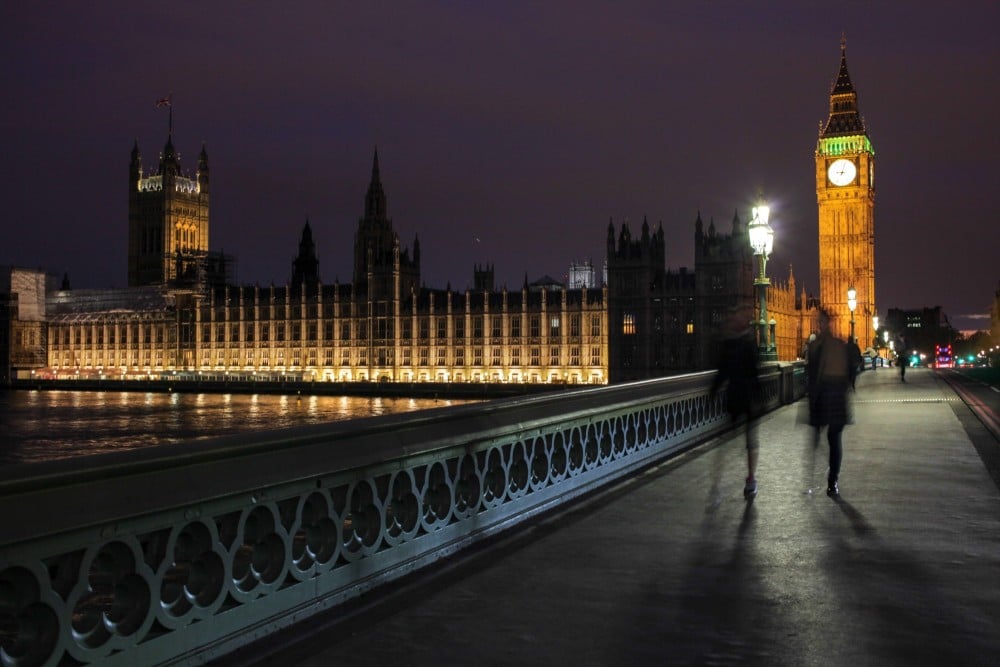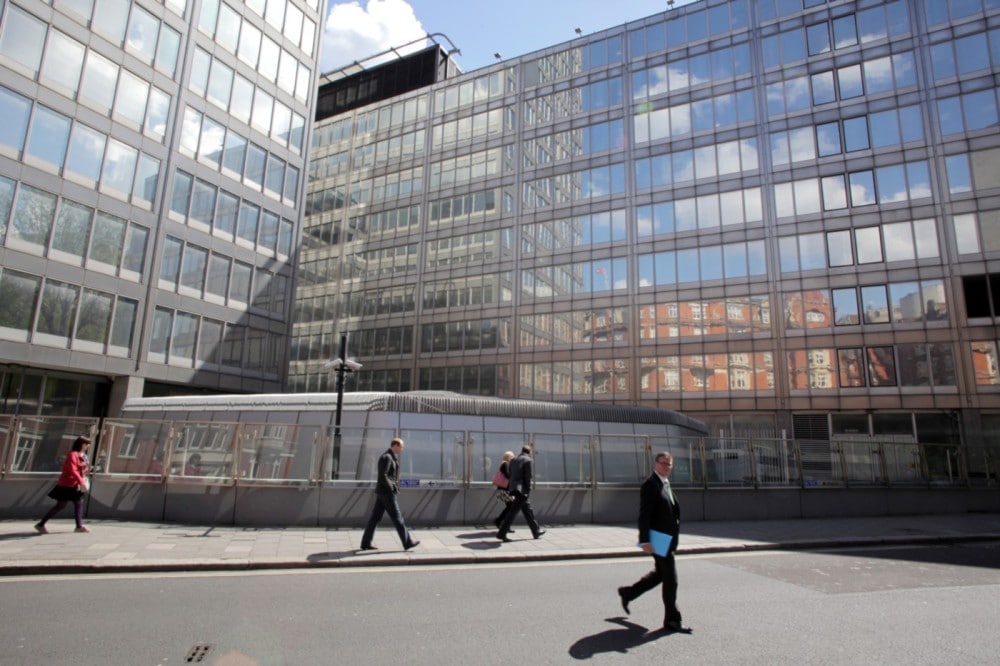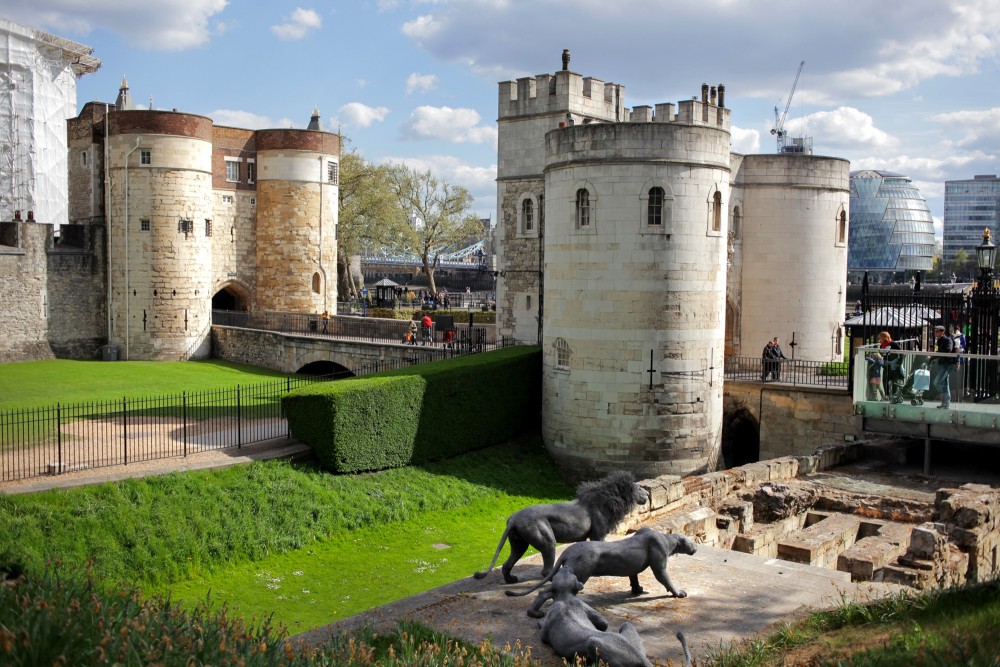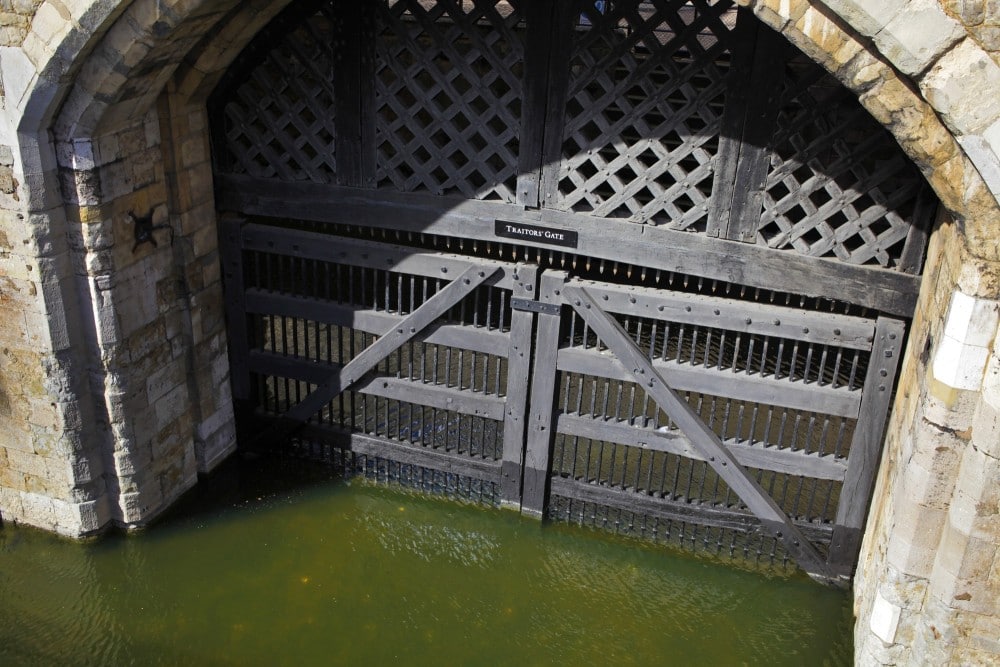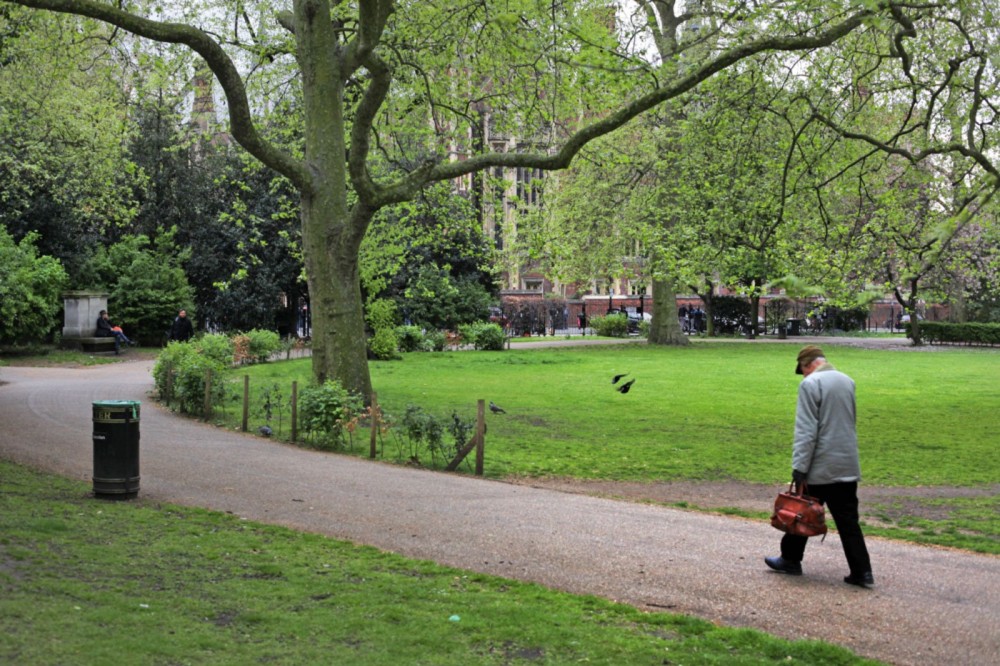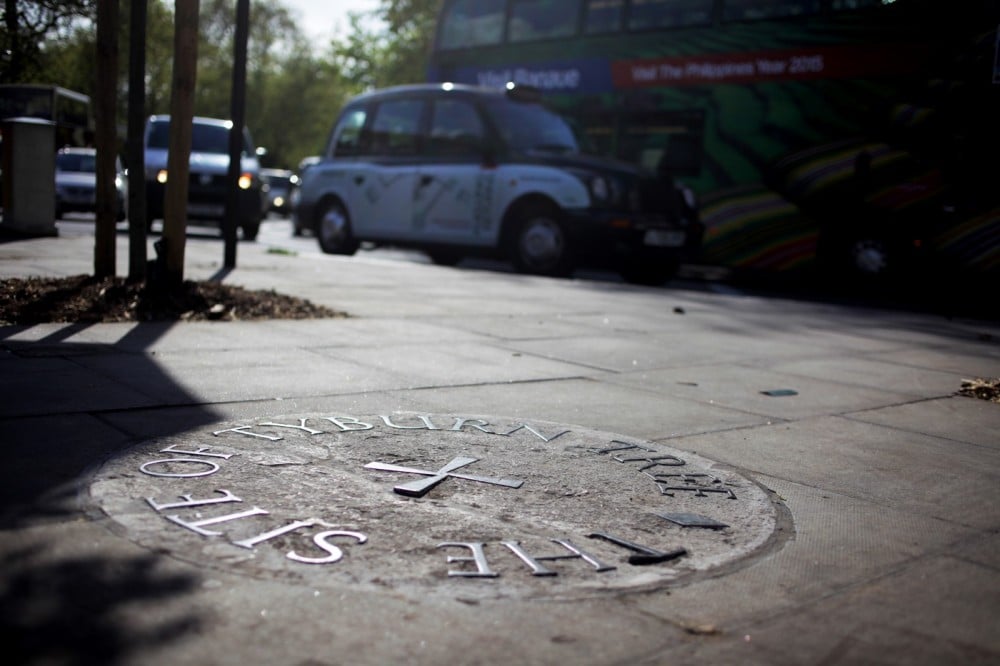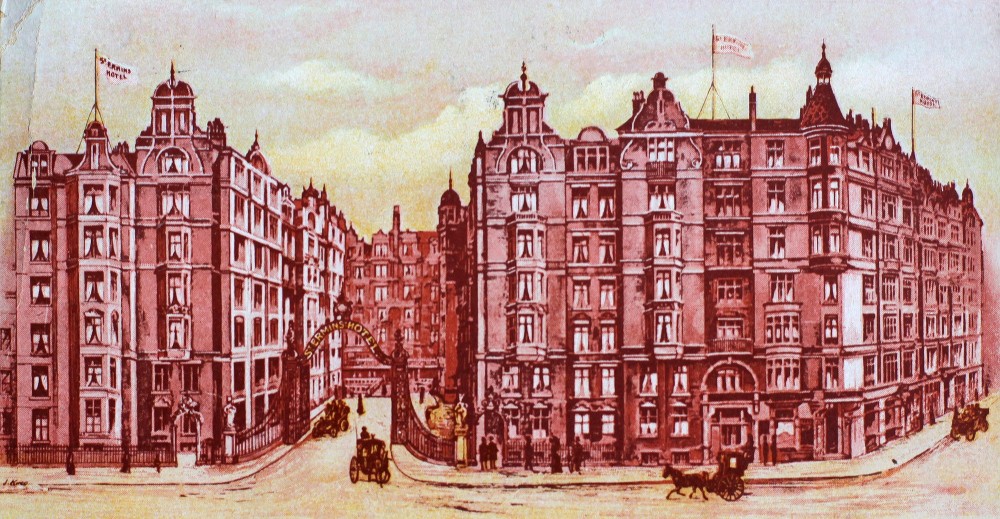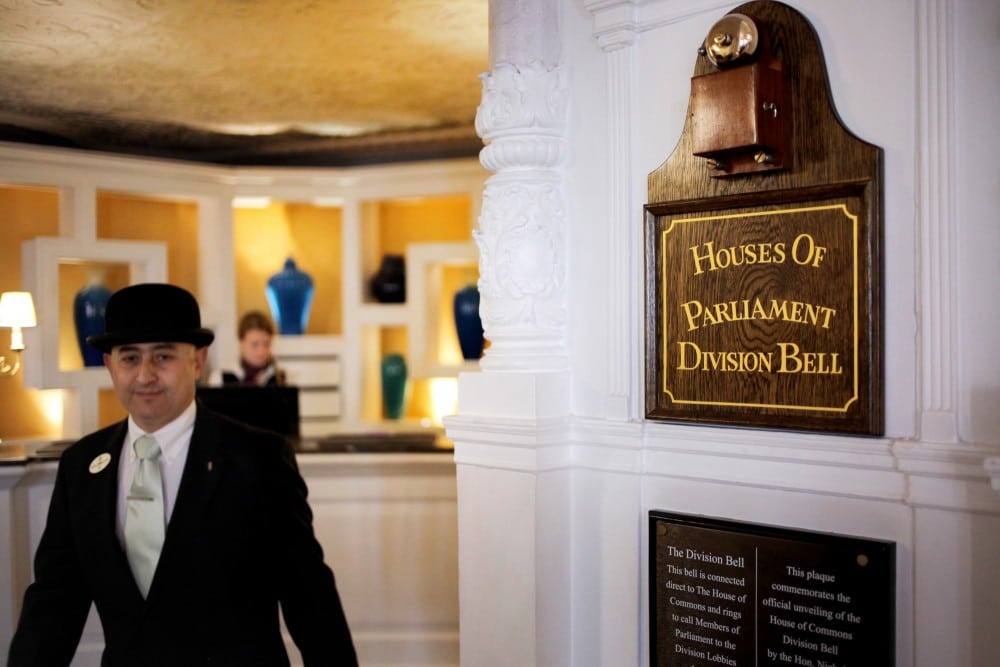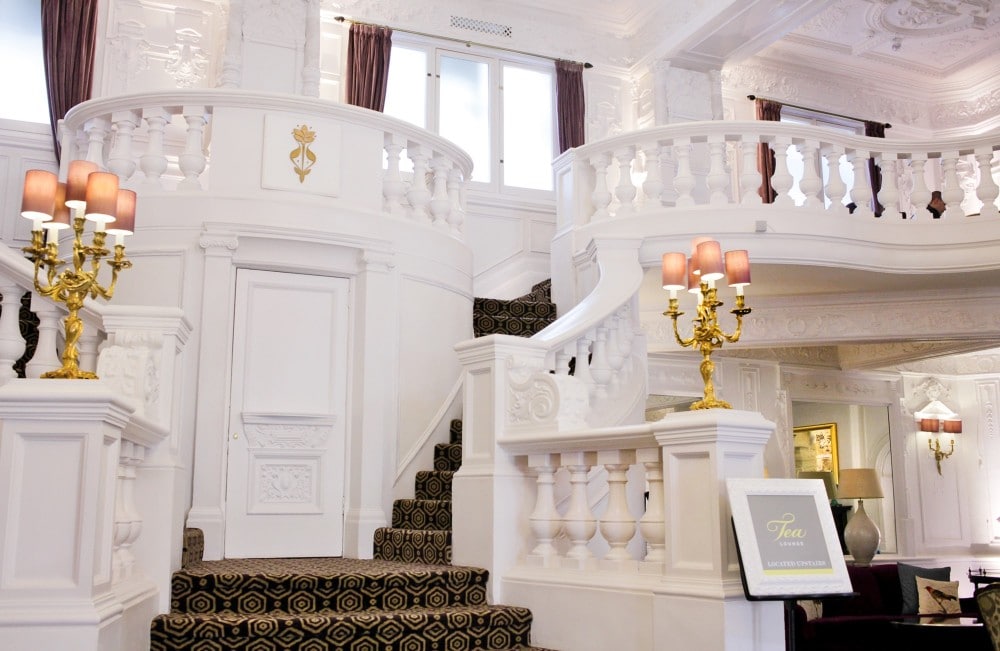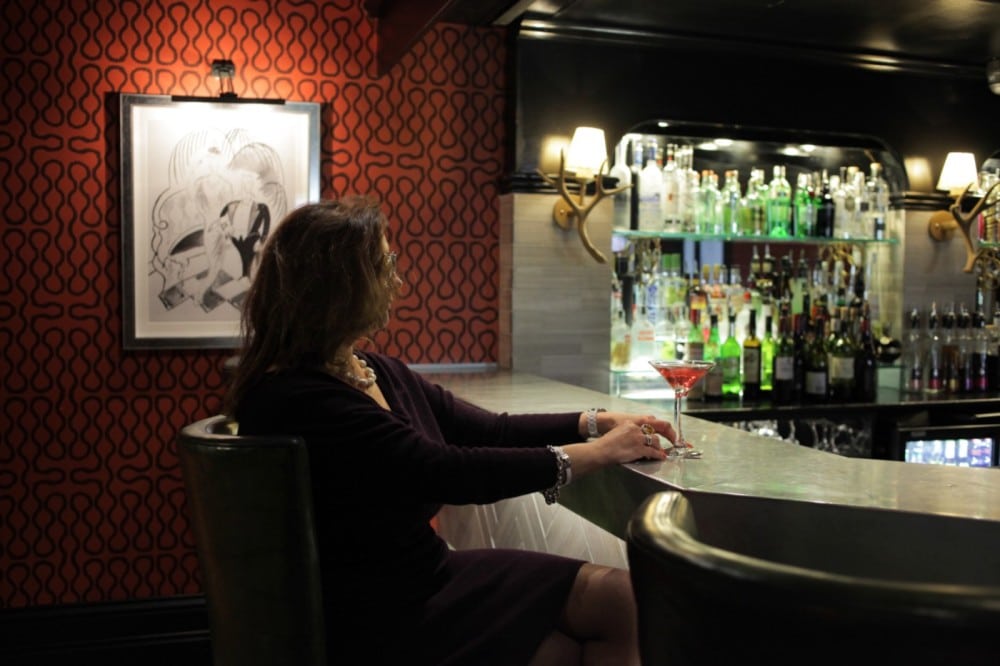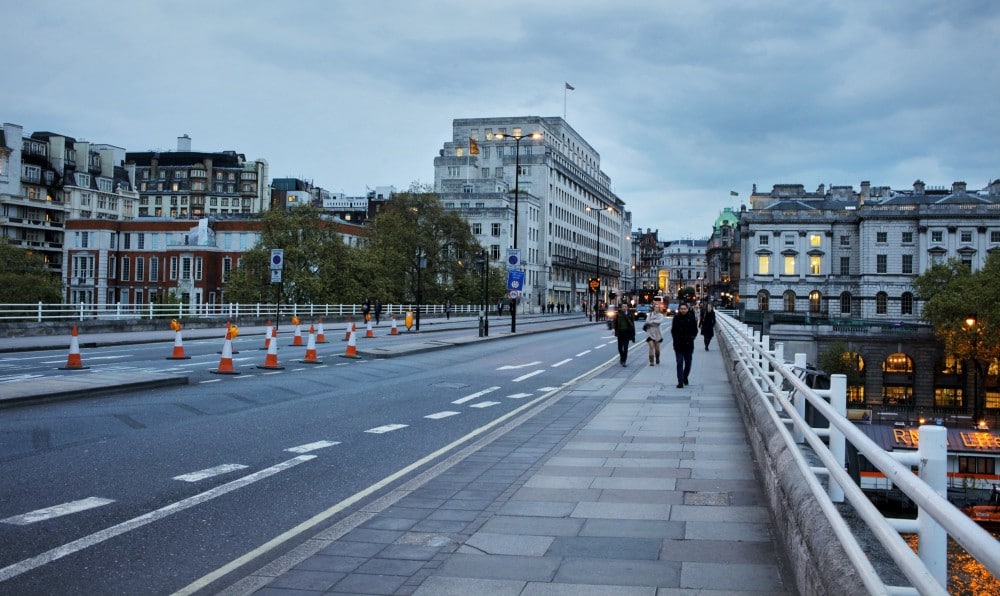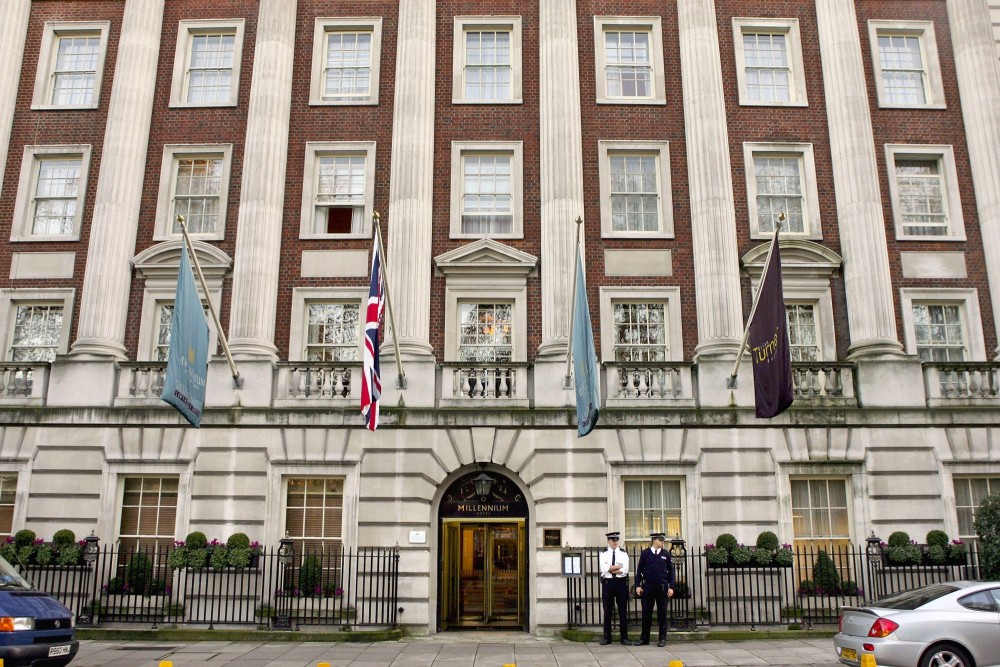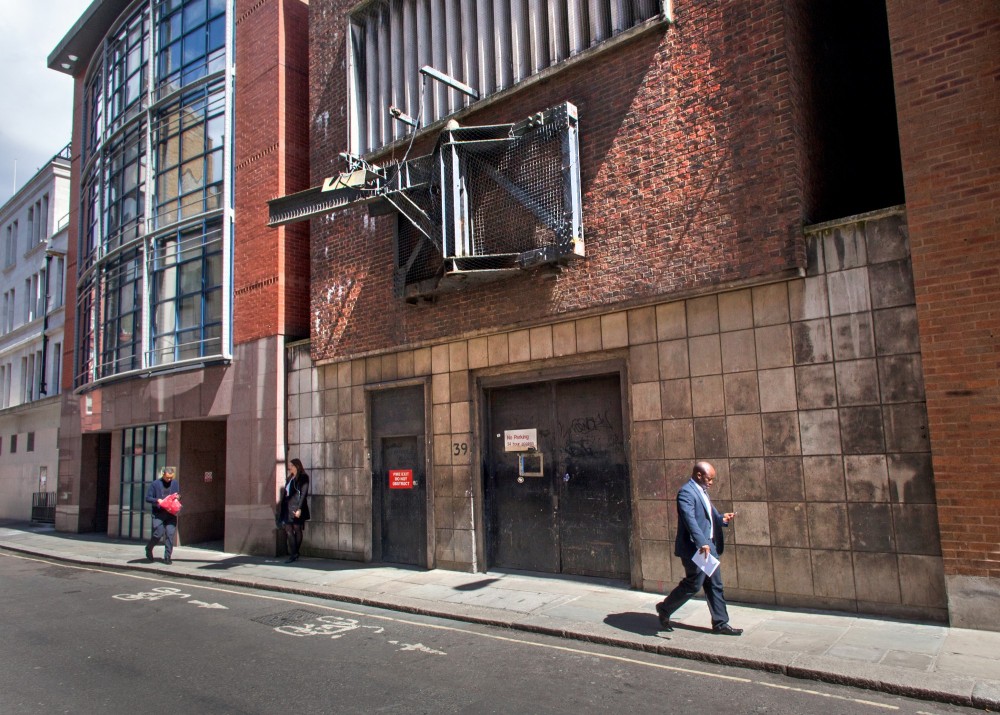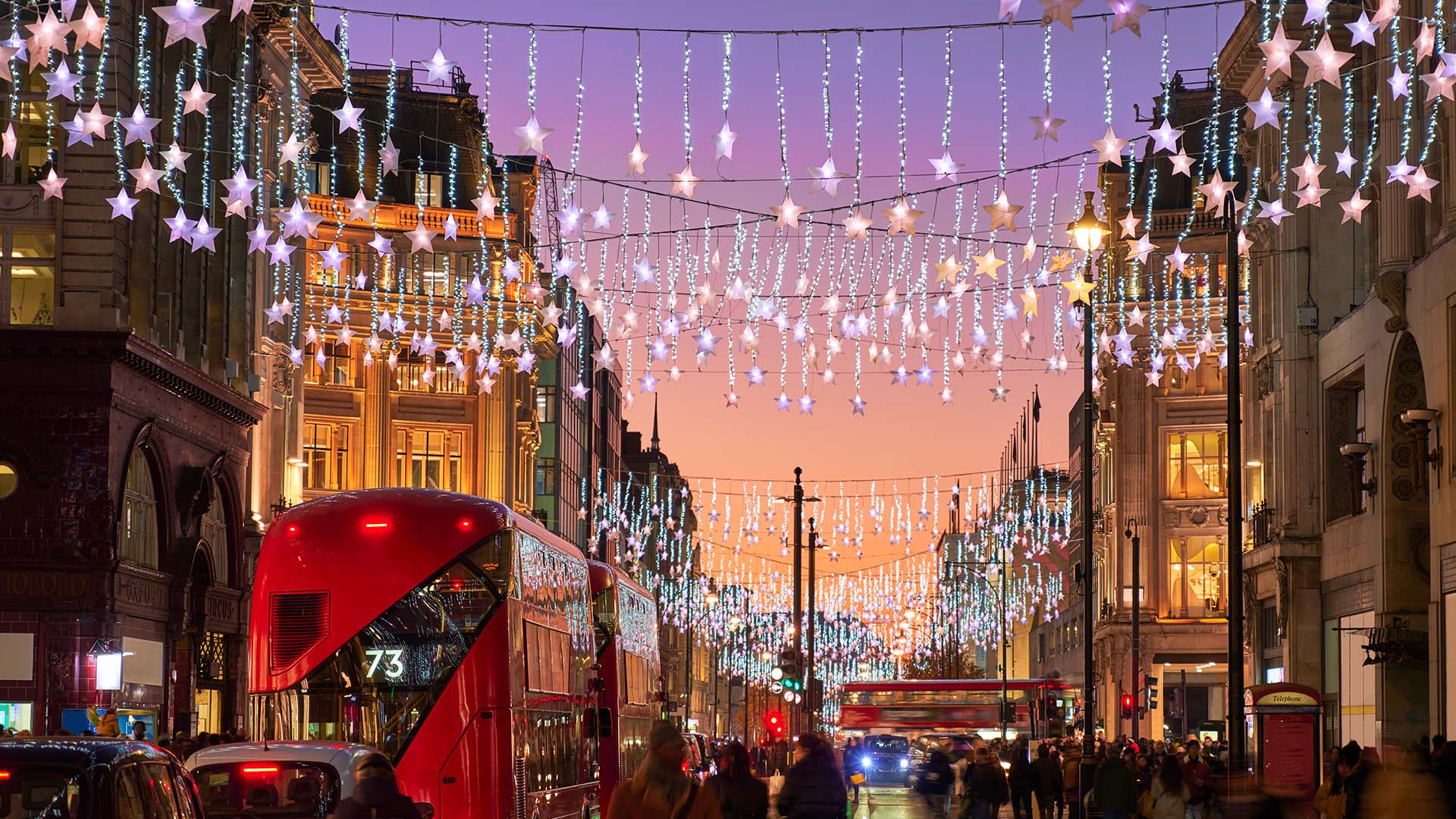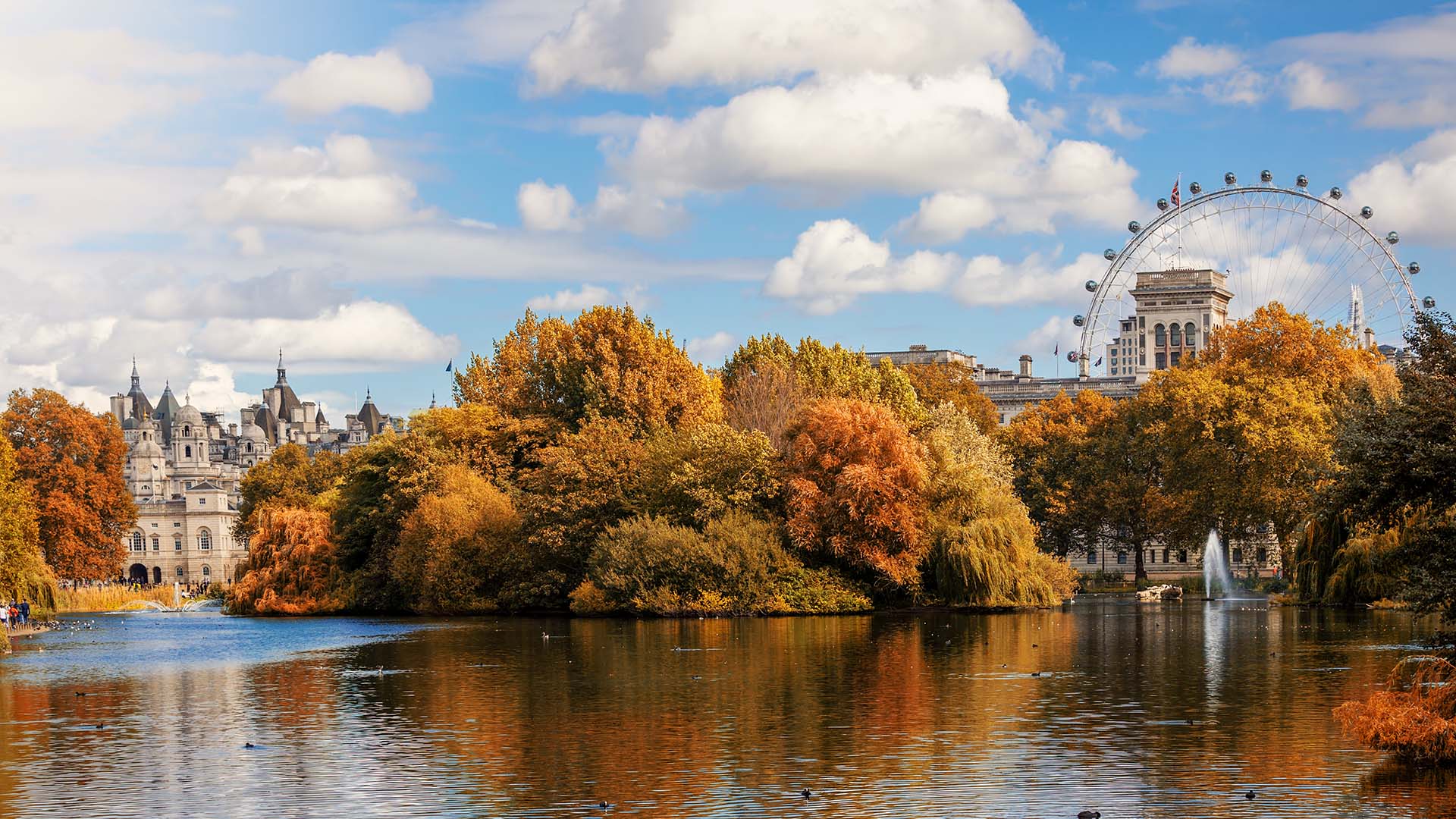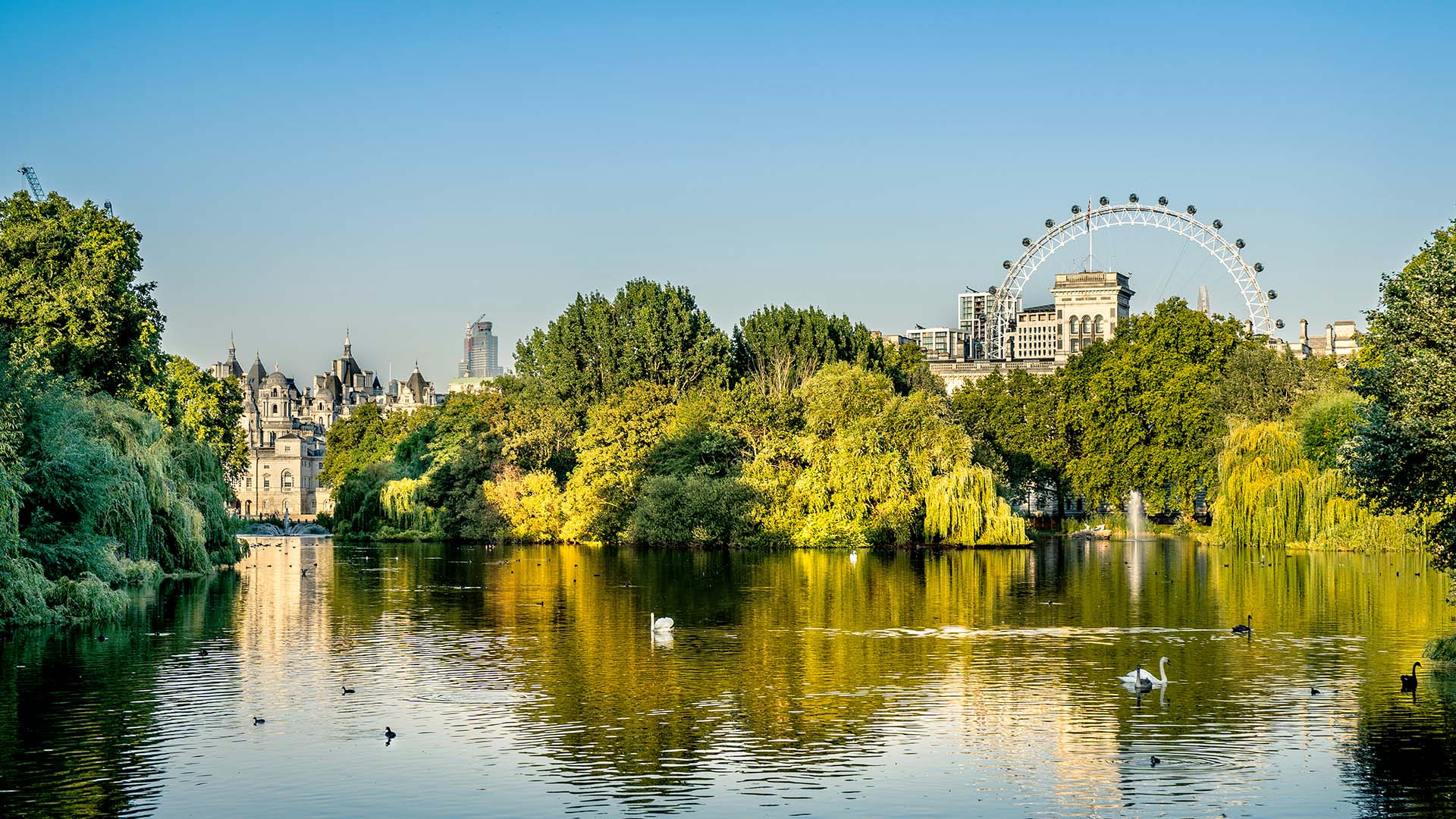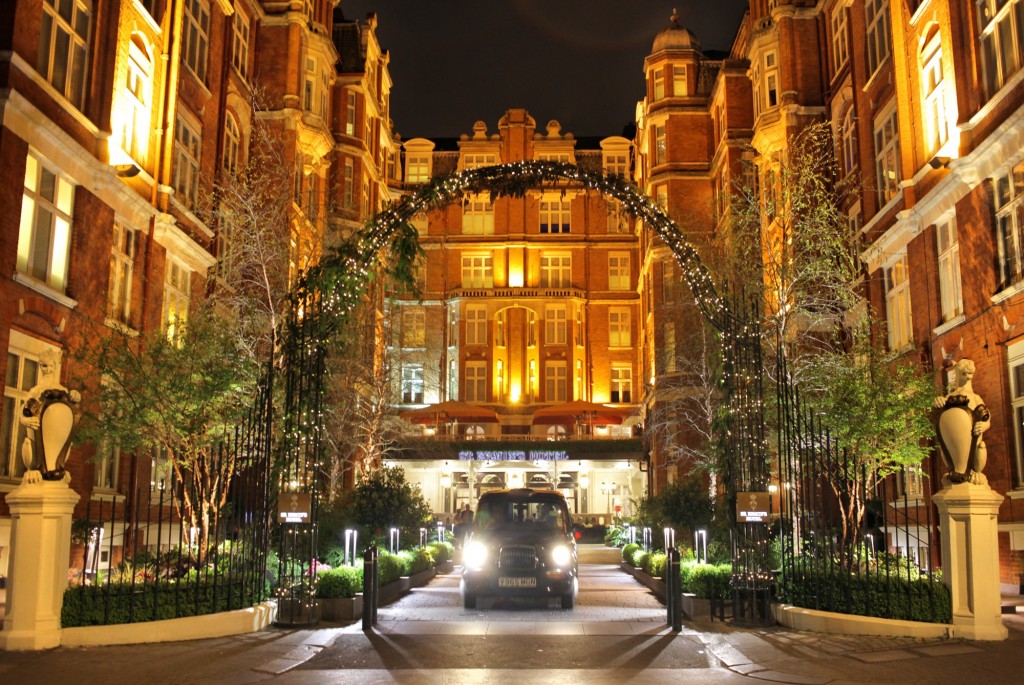
St. Ermin’s Hotel is one of the top spy sites in London. (Photo:Grégoire Bernardi)
The fine art of espionage is most associated with three great cities: Moscow, Berlin and, above all, London — home of MI5, John Le Carré, and Ian ‘James Bond’ Fleming.
As a born-and-bred Londoner, my general advice for tourists is to tackle the West End’s shopping and entertainment during the week, and to explore The City (the center of history and finance) on the weekend. But for a more structured and purposeful way of diving into the metropolis, nothing beats a tour of the top spy-related sites.
You can use it as an excuse to celebrate the arrival of another Bond flick, “Spectre,” set to release this fall. Just don’t forget your secret camera…
St. James’s and Scotland Yard
St. James’s is home to New Scotland Yard, the headquarters of the Metropolitan Police, and the Palace of Westminster. (That’s The Houses of Parliament to you and me, the gothic fantasy that houses Big Ben).
Westminster at night, London (England). The building is also the House of Parliament. (Photo: Grégoire Bernardi)
It was at this Palace that espionage really came into its own, in the time of Elizabeth I. Her father, Henry VIII, had created the Church of England when the then-Pope refused him a quickie divorce from his resolutely Catholic wife, Catherine of Aragon.
When the king passed there was no male heir, leading to a fight for accession between his first-born daughter, the Catholic Mary Queen of Scots, and the Protestant Elizabeth.
It was a time of suspicion and fear, with neighbor spying on neighbor. The war for England’s soul raged, not on the battlefield, but in the the stone-vaulted arches, nooks and crannies of the Palace of Westminster, where the court’s conspirators hid as they hatched their plots.
The spymaster manipulating these gatherings, and reporting everything back to Elizabeth, was the devout Protestant Francis Walsingham. He recruited undergraduates from Oxford and Cambridge, sending them to Spain, France and Italy in order to gather intelligence.
The recruitment system worked — and continues to function to this day.
Scotland Yard today. (Photo: Grégoire Bernardi)
New Scotland Yard, meanwhile, is a somewhat misleading name. When the Metropolitan Police Service was founded in 1829, it operated from a building at 4 Whitehall Place.
Public access, though, was via the rear entrance in Great Scotland Yard; and that’s the name that stuck when the force moved to its current address.
The Tower of London
From St. James’s, head down to Victoria Embankment — on a pleasant day, a 20-minute stroll eastwards along the river.
Soon you’ll be at the fabulously preserved Norman castle, the Tower of London.
Built as a prison by William the Conqueror in 1078, it was a hated symbol of the new ruling elite who had invaded England.
The Tower of London and Tower Hill, originally built by William the Conqueror in 1078 and renowned through the centuries for stories of imprisonment, torture and execution, London (England), Tuesday, Apr. 28, 2015. (Photo: Grégoire Bernardi)
The tower is a favorite on any tourist trail of London, but you’re here to see the notorious Traitor’s Gate, entranceway to the warren of tunnels and cells in the bowels of the castle.
England’s most important political prisoners were usually accused of treason and executed at the Tower of London. They were made to enter the building on a barge through Traitor’s Gate.
The Traitor’s gate. (Photo: Grégoire Bernardi)
Indeed, only seven executions have been recorded in the history of the tower, including Henry VIII’s discarded wives: Anne Boleyn and Catherine Howard. The last was the German spy Josef Jakobs, shot by firing squad in 1941.
The gate has since been bricked up, but you can still see its original archway under St. Thomas’s tower.
Lincoln’s Inn Fields and Tyburn
From the Tower of London, you’ll need to take the underground to the Temple stop.
Ask a local to point out the wooden doorways through which you can step into a quiet oasis of medieval buildings, courtyards and green spaces.
A man walks in Lincoln’s Inn Fields at twilight, London. (Photo: Grégoire Bernardi)
This is Lincoln’s Inn Fields — where, in Elizabethan times, less exalted prisoners would finally be executed after being dragged around by a horse and hanged to the point of near-death.
These days, the fields are the favored haunt of barristers, whose offices (or “chambers”) surround this patch of green in the heart of the City of London.
They won’t hang, draw or quarter you, as they did with prisoners in the 16th century — but they will have the shirt off your back before you know it.
A plaque at Marble Arch, London (England), marking the site of the Tyburn Tree, where hangings took place back in Elizabethan times. (Photo: Grégoire Bernardi)
Another favorite execution spot, further west, was Tyburn, a village near today’s Marble Arch. Nothing now signals its bloodied history, but rumor has it that the phrase “one for the road” has its origins here. Prisoners brought from the notorious Newgate Prison to Tyburn along the old Oxford Road were allowed to step down from the tumbril for one last drink roughly halfway along the route. This is roughly where the Tottenham Arms stands today, opposite the entrance to Tottenham Court Road Tube station. Climbing back onto the transport meant the prisoner would be once more “on the wagon.” Or so the story goes, at least…
St. Ermin’s Hotel
Now let’s fast-forward a couple of centuries or so to 1887 — the year that St. Ermin’s, a magnificent example of London’s famed mansion blocks, was built. (Full disclosure: St. Ermin’s is an Autograph Collection hotel).
In 1896, the building was purchased in order to be turned into a hotel. Just a stone’s throw from the Houses of Parliament, it has been shrouded, over the years, in the miasma of espionage history.
The lobby houses a Division Bell that sounds when a vote is about to be cast, giving corpulent Members of Parliament enough time to scuttle back to work and ensure their loyal vote is recorded by their political paymasters.
The Division Bell in the lobby of St Ermin’s Hotel in Victoria, London. (Photo: Grégoire Bernardi)
Legend even has it that there is a secret tunnel leading to Parliament, though I can neither confirm nor deny this claim.
Round the corner from St. Ermin’s is 55 Broadway, which was, at one time, the headquarters of the British Secret Intelligence Service (SIS, now better known as MI6). In the 1930s, the hotel was partially occupied by the MI6.
The lobby of St Ermin’s Hotel in Victoria, London (England), Tuesday, Apr. 28, 2015. The white door is supposed to be a secret passage that leads via a tunnel to Parliament. (Photo: Grégoire Bernardi)
Make a stop here and become acquainted with some of the better known SIS agents from the era —Ian Fleming, Noel Coward, and three of the ‘Cambridge Five’ — Guy Burgess, Anthony Blunt and Kim Philby. (The Rupert Everett film Another Country was based upon this group of double agents who passed information to the Soviet Union.)
During World War II, St. Ermin’s was the center of Britain’s spying industry. The hotel’s Caxton Bar was heavily patronized by intelligence and government officials, including Winston Churchill.
Caxton Bar (Photo: Grégoire Bernardi)
Imagine, for a second, that it was in these smoky, wood-paneled rooms, that Churchill came up with the idea of a dirty tricks unit that would “set Europe ablaze” after the fall of France during WWII.
The group, which became known as the Special Operations Executive (SOE), was tasked with sabotaging the Axis forces — blowing up bridges, tunnels and railway lines.
The SOE eventually took over an entire floor, while the Caxton Bar was used throughout the war by MI6 and MI5 to interview prospective employees.
It was also here that double agent and eventual defector Guy Burgess would meet his Russian handler to hand over government papers. Risky business indeed…
Vauxhall Cross and Waterloo Bridge
From St Ermin’s, take a stroll down to the Embankment and walk to Vauxhall Bridge, a brisk 15-minute trot along the river.
Opposite, on the south side, you’ll see an extraordinary building that looks a little like an enormous old-fashioned typewriter, nicknamed ‘Legoland.’
This is Vauxhall Cross, home to MI5 and immortalized in the later installments of the James Bond franchise.
A 20-minute walk back in the direction you have come from is Waterloo Bridge, site of an extraordinary act during the Cold War — possibly the most notorious of its day.
Waterloo Bridge at twilight, London. (Photo: Grégoire Bernardi)
In 1978, Bulgarian dissident Georgi Markov was walking across the bridge on his way to work for the BBC World Service, when he suddenly felt a sharp pain in his leg.
Markov was a frequent and outspoken critic of the communist Bulgarian government, making him a clear enemy of the state. He looked around and saw a man put away an umbrella and cross the street. Markov thought little of the incident, but that evening, he fell into a fever and was dead within four days. T
he post-mortem showed that a ricin pellet had been fired by the ‘umbrella.’ There was no known antidote at the time.
Millennium Hotel, Grosvenor Square
Also reachable via a 10-minute walk from St. Ermin’s is the Millennium Hotel, the scene of perhaps the most outrageous act of espionage ever carried out by a foreign state.
Two British police officers stand outside of the Millennium Hotel in Grosvenor Square on November 28, 2006 in London, England. Detectives are continuing to examine five locations in London where traces of polonium-210 were found after Former Russian spy, Alexander Litvinenko’s death. Litvinenko’s death has been linked to the presence of a “major dose” of radioactive polonium 210 in his body. (Photo: Scott Barbour/Getty Images)
Former Russian Secret Service officer Alexander Litvinenko was a defector who claimed, among other accusations, that a Chechen terrorist attack in Moscow had been engineered by Russian authorities to legitimize their war in Chechnya and to assist Vladimir Putin’s rise to power.
In November 2006, Litvinenko met KGB agents and Putin loyalists Andrei Lugovoi and Dmitry Kovtun. Litvinenko drank a pot of green tea and shortly after fell ill, dying 26 days later. Tests showed that the tea had been poisoned with radionuclide polonium-210.
The trail of polonium around London — including at Arsenal FC’s Emirates Stadium — coincided with Lugovoi’s movements. Lugovoi fled back to Russia, where he enjoys immunity from extradition; British police remain convinced that he is their man.
Chancery Lane Deep-Level Shelters
Still haven’t had your fill of secret agents? Take the Tube back up to Chancery Lane. Here, a quiet fire escape on Furnival Street, off High Holborn, is all that marks what was an essential part of the Cuban Missile Crisis.
Entrance to the Chancery Lane deep level shelter, Furnival Street near Chancery Lane, London. (Photo: Grégoire Bernardi)
Back in World War II, a network of tunnels was built to act as air-raid shelters for up to 8,000 people. More than 100ft deep, the tunnels weren’t extensively used as shelters. But in the 1960s, they were taken over by MI6 as a communications hub and used to transmit messages between President John F Kennedy and Russian premier Nikita Khrushchev. Now decommissioned, the tunnels are available for purchase by any would-be troglodytes with £5 million to spare.
After all that sleuthing, now is the time to head back to Caxton’s Bar, where you may just spy a cocktail in your future. Go ahead — you’ve earned it.
This story first appeared on Medium.com as a part of Gone – smart, surprising and compulsively readable travel stories, launched in partnership with the Marriott portfolio of brands.





